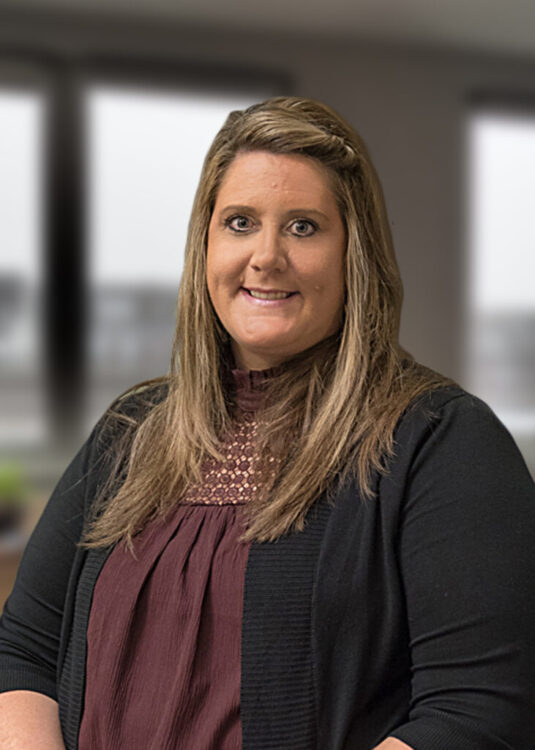Pandemic-related Opportunities Fuel Upturn in Kansas Manufacturing
State Tax Credit Programs Contribute to Turnaround
It may seem counter-intuitive in the midst of a pandemic that has shut down much of the U.S. economy in recent months, but the U.S. manufacturing industries are having a strong summer and, in fact, manufacturing activity in July hit the highest levels it has seen in 18 months.
The uptick is stronger in some industries than others, with transportation, manufacturing machinery, and aerospace remaining stagnant. But industries like food, equipment, and plastics manufacturing have more than taken up the slack, and the strength of the manufacturing numbers has some economists cautiously optimistic about a recovery from the COVID-19 economic crisis.
Kansas in Line with Nation
 Kansas manufacturers are performing in line with the national trend. According to a recent report from the Institute for Supply Management, a nonprofit association that tracks manufacturing activity, Kansas manufacturers shifted from a position of decline in June to one of growth in July. The state’s overall manufacturing index for July increased to 59.2 from June’s 45.1. (The index ranges up to 100, with a ranking of 50 indicating neutral growth. A figure higher than 50 indicates growth anticipated over the next three to six months. A figure below 50 indicates decline.)
Kansas manufacturers are performing in line with the national trend. According to a recent report from the Institute for Supply Management, a nonprofit association that tracks manufacturing activity, Kansas manufacturers shifted from a position of decline in June to one of growth in July. The state’s overall manufacturing index for July increased to 59.2 from June’s 45.1. (The index ranges up to 100, with a ranking of 50 indicating neutral growth. A figure higher than 50 indicates growth anticipated over the next three to six months. A figure below 50 indicates decline.)
Drilling down into the statistics, Kansas manufacturers showed particular strength in new orders, with an index of 68, as well as production at 64.8.
Only in employment did the state show a declining index at 48.3. According to the U.S. Bureau of Labor Statistics, Kansas has lost 78,000 jobs, or approximately 5.5% of its total employment since the start of the COVID-19 crisis, and 10,400 jobs – or about 6.2% – of its manufacturing employment.
Growth Drivers
The drivers of manufacturing growth are varied, with some related to the COVID-19 pandemic and others an outgrowth of economic volatility.
Many companies have pivoted during the COVID-19 pandemic to produce new products, including ventilators, masks, hand sanitizer, and medical gowns. While keeping their traditional product lines going, in some cases, many companies have accelerated their revenues by responding to needs created by the pandemic.
Additionally, economic volatility has contributed to consolidations and mergers, with financially strong manufacturers seizing the opportunity to acquire companies that produce related goods to their own, thereby diversifying their product lines and markets.
In some cases, companies located on the east and west coasts are acquiring Kansas companies to establish midwestern locations and improve their nationwide distribution channels.
Workforce Implications
While manufacturing is expanding, the COVID-19-related layoffs and furloughs contributed to July being the twelfth straight month of employment contraction in the U.S., which raises the question of how manufacturers are responding to increased orders and growth opportunities with fewer workers.
The answer is complicated. Some companies have kept their production online by keeping operational workers on board while laying off or furloughing non-operational employees, such as those in the marketing, HR, or finance departments. Some have used shared work programs. Others have used the COVID-19 crisis as an opportunity to automate parts of their operations, enabling them to produce more with fewer people. That change will likely be permanent and will help companies get where they need to be with fewer resources.
Role of State Tax Credits and Incentives
 State tax credits and incentives available to manufacturers also have contributed to the recent strong manufacturing performance and the numerous recent announcements of manufacturing expansions in Kansas. Some of the most popular state tax credit programs and incentives that attract manufacturers to Kansas include:
State tax credits and incentives available to manufacturers also have contributed to the recent strong manufacturing performance and the numerous recent announcements of manufacturing expansions in Kansas. Some of the most popular state tax credit programs and incentives that attract manufacturers to Kansas include:
PEAK (Promoting Employment Across Kansas) – Created in 2009, PEAK provides a credit on employee withholding for Kansas income taxes if they create at least five jobs within a two-year period. The program allows employers to retain 95% of the Kansas taxes that would normally be withheld for those employees. In larger metropolitan areas, employers must create at least 10 new jobs to qualify.
The positions must be retained for two years, must offer health insurance with the employer paying at least 50% of the premiums, and must pay at least 100% of the median wage within the county where they are located.
It’s important to note that employers must start the paperwork with the Kansas Department of Commerce before doing any of the hiring to qualify for the PEAK credit.
KIT – Kansas Industrial Training Program – This program provides state tax credits against the cost of industrial training provided by companies that have created new jobs or retraining of existing workers by companies that have purchased new software or equipment. For retraining, the company must provide up to 50% of the costs, but for training of new workers the credit can cover 100% of the costs. Typical credits under KIT amount to $200 to $800 per trainee.
To qualify for KIT, companies must offer employees health coverage for which the employer pays at least 50% of premium costs.
HPIP – High Performance Incentive Program – The HPIP program is a bit more complex, but benefits companies that need to make capital improvements to grow and add more jobs. HPIP provides a 10% tax credit against the costs of large upgrades to buildings, machinery, or equipment. The capital investment must be at least $50,000 to qualify, or $1 million in large metropolitan areas.
Startups that are growing but have no tax liabilities yet because they may not be profitable can benefit from HPIP during their growth phase because the credit can be carried forward for 16 years.
To qualify, companies must provide employees health insurance for which the employer pays at least 50% of the premium costs and must pay above the median wages for the geographic area.
Sales tax exemption – In addition to the programs above, companies can get a state sales tax exemption if they are building or expanding a facility.
Often, companies can qualify for all the state tax incentives above, or some combination of them.
Please reach out to your Adams Brown advisor with any questions you may have about growth opportunities for your manufacturing business.

